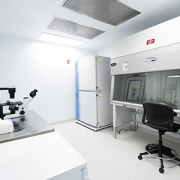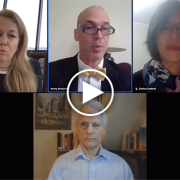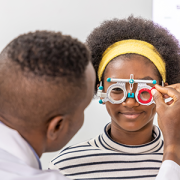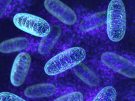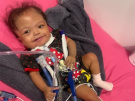Developing next-generation T cells to fight cancer

In the last decade, researchers have witnessed significant advances in the immunotherapy field. Most recently, a study in Nature claimed a novel CAR T-cell therapy “cured” a patient.
In the last decade, researchers have witnessed significant advances in the immunotherapy field. Most recently, a study in Nature claimed a novel CAR T-cell therapy “cured” a patient. Given the landmark scientific achievement for patients with different types of leukemia and lymphoma, Children’s National Hospital experts chimed in on the technology they have developed beyond CAR T cells.
Catherine Bollard, M.D., M.B.Ch.B., director of the Center for Cancer and Immunology Research at Children’s National Hospital, discusses the implications of this research, how it relates to the work she’s doing at Children’s National and the future of T-cell therapies.
Q: What did the research published in Nature find?
A: It reported a decade-long experience with this novel T-cell therapy called CD19 CAR T cells. These were used to treat patients with a type of leukemia or lymphoma that expresses the CD19 on its surface. While the article reported the experience of Children’s Hospital of Philadelphia and the University of Pennsylvania, multiple groups throughout the country did similar trials that have used these unique CD19 CAR T cells to treat children and adults with these refractory blood cancers.
Q: What are your thoughts on the implications of this research?
A: We now have three FDA-approved commercial CD19 CAR T-cell products developed by several academic institutions. This is revolutionary for our patients who have B-cell leukemias and lymphomas. It’s incredibly exciting for our T-cell therapy field in general because this was the first time the FDA approved a T-cell therapy. What it means now is the field is extremely excited to develop similar effective therapies for other patients with cancer.
Q: How does this relate to your work at Children’s National?
A: While CAR T cells have made tremendous progress for patients with B-cell leukemias, lymphomas and other blood cancers, the CAR T-cell field has not made the same impact for adult and pediatric solid tumors. We think the field is going to expand the type of T-cell therapies we’re generating beyond just CAR T cells. That’s where the work we’re doing comes in – not only by developing new T cells that don’t need gene engineering but also T cells that can be used as a platform for next-generation engineering approaches. We think the technology we’ve developed at Children’s National will help make an impact, especially in the solid tumor space. I hope in the next 10 years, we’ll be having a conversation not just about CAR T cells, but about other types of T cells that are now making an impact for solid tumors.
Q: How are the CAR T cells you develop different than those in the Nature article?
A: We think our multi-antigen specific T cells are complimentary and could have more potency than conventional CAR T cells for solid tumors especially when used in combination. This is in part because they can identify multiple targets on a tumor cell. Tumor cells are very clever and try to hide from T-cell therapies by down regulating the target that the T cell is directed towards. However, our novel T-cell therapies get around that escape by targeting multiple targets in a single product, making it much harder for the cancer cell to hide from the immune attack by the T cells.
Additionally, we’re excited by our approach because not all of our products require gene engineering, unlike CAR T cells. We have effectively used our T cells to target viruses in the “off-the-shelf” setting and we’re now about to start a first human clinical trial at Children’s National using an off the shelf T-cell product for children with solid tumors. It makes the T-cell therapy more like an “off-the-shelf” drug therapy that will allow us to treat many more children and adults nationally, as well as we hope, internationally.



